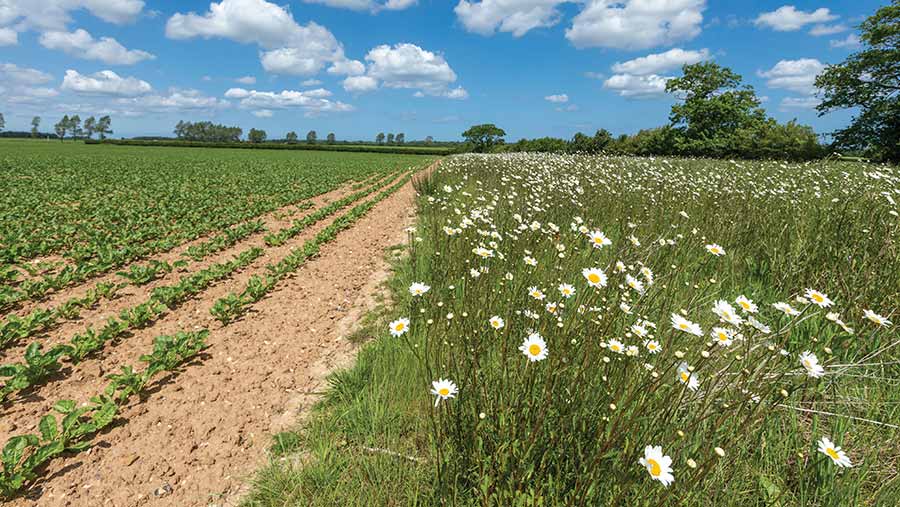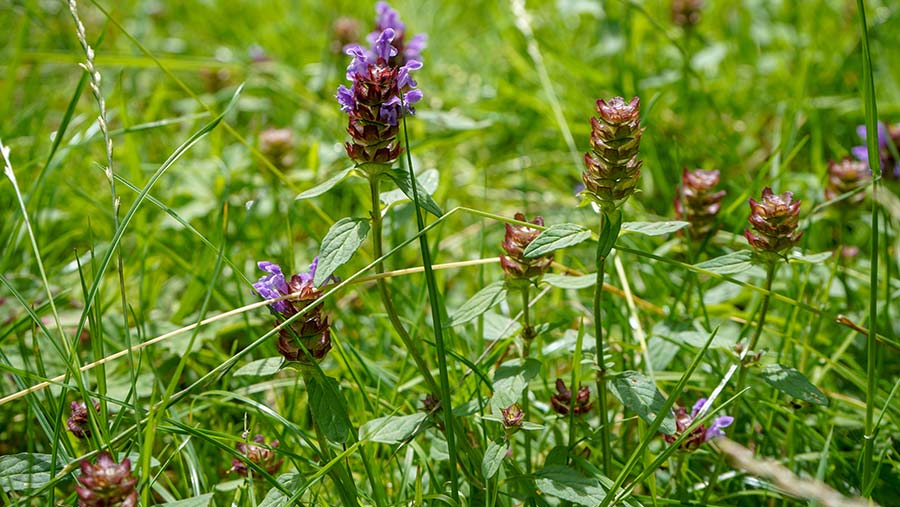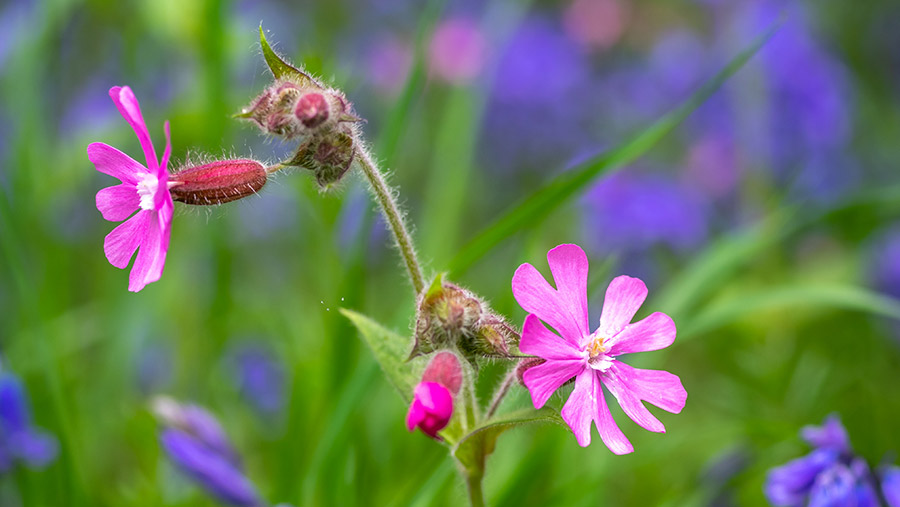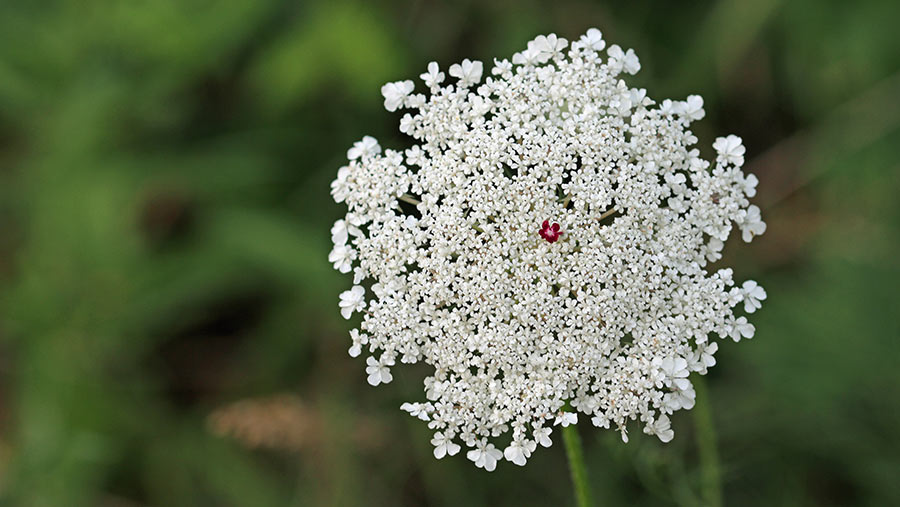How to achieve success with IPM2 flower-rich margins in SFI
 © Gary Naylor Photography
© Gary Naylor Photography At £798/ha, IPM2 is one of highest paying Sustainable Farming Incentive (SFI) options and is attracting interest from lots of growers.
But it also might be one of the trickiest to establish and get right, suggests Cotswold Seeds technical manager Sam Lane.
The IPM2 option is where growers establish grass margins, blocks or in-field strips containing flowering plants during the summer months into early autumn.
See also: How to maximise performance of NUM3 legume fallows
Similar to AB8 in Mid Tier Countryside Stewardship, IPM2’s purpose is to encourage natural crop pest predators as part of an integrated pest management (IPM) approach, and/or to provide habitat and foraging sites for invertebrates, including wild pollinators such as bees, butterflies, hoverflies and farmland birds.
Providing overwinter habitat is just as essential as summer habitat, Sam suggests.
“I think that’s often overlooked with this sort of option. It’s also important to try to have as many species flowering for as wide a window as possible to support pollinators and beneficials.”
Wildflowers to consider
- Ox-eye daisy: Reliable and easy to establish, suits most soil types
- Lesser knapweed: Grows on most soils with a wide flowering window from June to September
- Self-heal: Purple-flowered perennial that, once established, lasts for many years. Low-growth habit means it can tolerate grazing.
- Wild carrot: A taller species with clouds of white flowers, from June to August
- Field scabious: Suits calcerous chalk and limestone soils. Can be slow to get going, but once established lasts for many years
- Musk mallow: Upright, pink-flowered species that suits heavier clay soils
- Red campion: Tolerates shady areas and flowers early in the spring. Suits medium-to-heavier soil types

Self-heal © Robert/Adobe Stock

Red campion © Robert Lavers ARPS/Adobe Stock

Wild carrot © JohnatAPW/Adobe Stock
Time
While the option can be rotational, according to Defra’s guidance, Sam thinks it would be difficult to achieve those aims in a short space of time.
“The suggested species mix specifies slow-growing grasses and traditional wildflowers, which take the best part of a year to establish.”
With a three-year SFI agreement, these margins, blocks or in-field strips should be in the ground for at least that period, if not longer, he says.
The longer it is left in situ, the better the habitat will be for overwintering insects and building up beneficial populations.
It could also be a way of funding the creation of a long-term wildflower meadow.
Using it as a short-term rotational option for a year is unlikely to achieve the option’s aims, as well as being cost prohibitive with high seed mix costs, he warns.
“There are other options such as AHL1 (pollen and nectar flower mix), which, as it doesn’t contain grasses and can be established more quickly, would be better to move around more regularly.”
The option can work either to take larger blocks of land out of production – there’s no limit on how much areas can be utilised on farm – or to fit in 6-8m margins around the edges of fields, potentially to help straighten up odd-shaped fields.
“Aim to link up areas of habitat on the farm,” Sam advises. “So that might be linking hedgerows, or hedgerows to woodlands, to create wildlife corridors as much as possible.”
Sam says linking up habitats should improve the value of the resource to pollinators and beneficials, and hopefully allow them to range across the farm more easily.
It can also be utilised, a bit like beetle banks, as an in-field strip of 2-4m width to encourage pest predators, such as lacewings and hoverfly larvae, across the field.
Soil type and fertility are other considerations. “Wildflower mixes tend to do better on lighter, free-draining, lower fertility soils.
“Conversely, on heavier clay ground, grasses tend to do well naturally, so you can have a competitive grass sward working against wildflowers.
“You can tailor mixes to suit the soil type to some extent though [see “Eight pest-controlling beneficial species].”
Eight pest-controlling beneficial species
- Ladybird
- Hoverfly
- Lacewing
- Parasitic wasp
- Wasp
- Ground beetle
- Soldier beetle
- Rove beetle
Seed mixes
The seed mix must contain at least four grasses and make up no more than 90% of the mix.
It cannot include ryegrasses, with the recommendation to use non-aggressive, traditional grasses such as smooth-stalked meadow grass, red fescue, sheep’s fescue and bentgrass.
It also must contain at least 10 species of wildflowers, with no individual flower species making up more than 25% in weight.
While you can use agricultural versions of flowering species, such as sainfoin, red clover and bird’s-foot trefoil, Sam points out they will have less persistence than traditional wildflowers, such as field scabious or knapweeds.
“They will help bring down the overall cost, so it probably depends on how long you want the margin or block to last.”
Typically, seed mixes will cost from £250/ha, at the cheaper end, to more than £500/ha for ones including specialist wildflower species.
Research is ongoing about how to encourage specific beneficial insects, but Sam notes it’s not entirely straightforward.
“You’ll probably need to some specialist knowledge to help fine-tune to that level.”
Establishment
Ideally, he suggests establishing post-harvest in late August or early September, as experience has shown the plants flower more reliably after going through a winter.
“We have sown in the spring – about April into early May – but the danger is drought or dry weather during the summer months can cause problems for these slow-growing mixes.”
A pass or two with a shallow cultivator to a depth of 5-6cm post-harvest to create a fine, firm seed-bed should be sufficient.
“Consider rolling before sowing, as wildflower seeds are generally very small and, therefore, sensitive to loose, puffy seed-beds or being sown too deeply.”
Broadcasting the seeds will ensure they are sown at a shallow depth, and usually gives even coverage and can help keep weeds at bay.
However, if it is dry, drilling to a depth of no more than 10mm can be advantageous to help get the roots into a little bit of moisture.
“Then roll again, probably twice, to conserve moisture and get a really fine, firm finish.
“The old saying with small seeds is that you should be able to ride your bike over a seed-bed that has been sown and rolled,” Sam says.
In-season management
In-season management, especially during the first year, is critical to achieving success.
“Within the first full year, whether spring- or autumn-sown, aim to cut and remove at least a couple of times.”
Defra guidance suggests cutting whenever weeds are just above the sown flowers and starting to shade them out, making sure you check for signs of nesting birds before cutting.
“Cutting may seem counterproductive, but it encourages the wildflowers and grasses to tiller and cover the ground better during the establishment phase.
“It can also be a useful way of dealing with annual weeds, such as charlock, fat hen and blackgrass.”
Once established, you can cut or graze with livestock as long as it will achieve the aim of IPM2.
For example, it could be cut in the spring before April, which will help flowers species grow without competition from dominant grasses.
And cut or graze in the summer between mid-August and late October to help reduce soil fertility and boost flowers in following years.
Staggering cutting across the margin or block’s area can also help provoke sequential flowering to provide a constant supply of flowers for invertebrate.
Sam says leaving an area of about 10% uncut or grazed each year provides a mature refuge for insects and other wildlife over winter.
Ideally, this will be a long-term option on the farm.
“But if you are returning the land into arable production, you would normally spray off with glyphosate, and then either cultivate or plough before going back into a crop rotation as you would with a grass ley,” he says.

